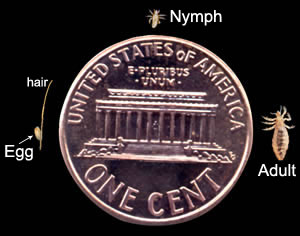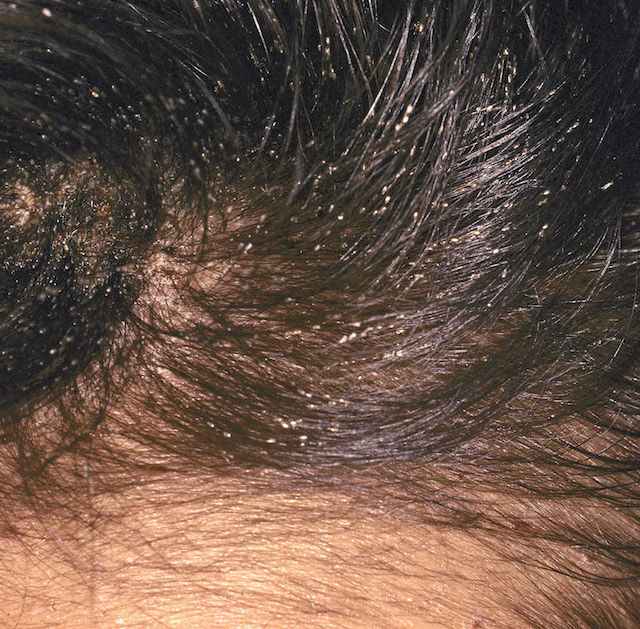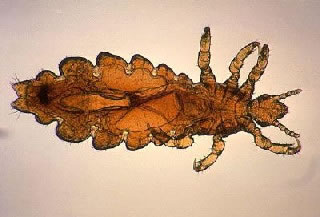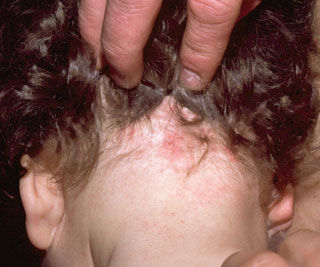Photos

Head Lice Size Compared to a Penny
Egg (Nit): Nits are head lice eggs. They are very small, about the size of a knot in thread. They are hard to see and are often look like dandruff or hair spray droplets. Nits are laid by the female louse at the base of the hair shaft, near the scalp. They are firmly attached to the hair shaft. They are oval and usually yellow to white. Nits take about 1 week to hatch. Eggs that are likely to hatch are usually located within ¼ inch of the scalp.
Nymph: the nit hatches into a baby louse called a nymph. It looks like an adult louse, but smaller. Nymphs mature into adults about 7 days after hatching. To live, the nymph must feed on blood.
Adult: the adult louse is about the size of a sesame seed, has six legs and is tan to greyish-white. In people with dark hair, the adult louse will look darker. Female lice, which are usually larger than male lice, lay eggs. Adult lice can live up to 30 days on a person's head. To live, adult lice need to feed on blood. If the louse falls off a person, it dies within 2 days.
Source: CDC DPD
This work is in the public domain because it is a work of the United States federal government. Text and image reproduced from the CDC Division of Parasitic Diseases.

Head Lice - Nits
This shows head lice nits in the hair. Nits are the eggs of head lice which stick to the hair.
Source: Self Care Decisions, LLC
From the Dr. James Fitzpatrick Collection of Pediatric Dermatology. Used with permission.

Head Louse
Source: CDC PHIL
From the CDC's Public Health Image Library (http://phil.cdc.gov), ID#377, in the public domain. Content Providers: CDC / Dr. Dennis D. Juranek.

Head Lice Reaction
This shows an allergic reaction to the saliva of a louse (a louse is one lice). It makes the skin itchy and red.
Source: Self Care Decisions, LLC
From the Dr. James Fitzpatrick Collection of Pediatric Dermatology. Used with permission.